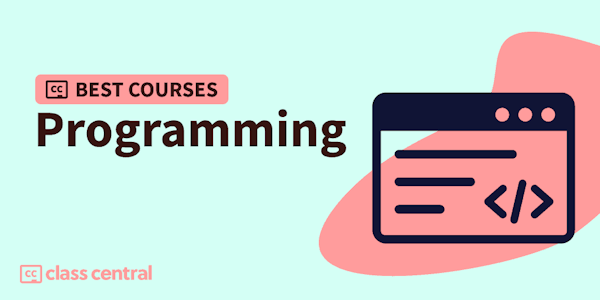Overview
Build on the software engineering skills you learned in “Java Programming: Solving Problems with Software” by learning new data structures. Use these data structures to build more complex programs that use Java’s object-oriented features. At the end of the course you will write an encryption program and a program to break your encryption algorithm.
After completing this course, you will be able to:
1. Read and write data from/to files;
2. Solve problems involving data files;
3. Perform quantitative analyses of data (e.g., finding maximums, minimums, averages);
4. Store and manipulate data in an array or ArrayList;
5. Combine multiple classes to solve larger problems;
6. Use iterables and collections (including maps) in Java.
Syllabus
- Welcome
- Welcome to “Java Programming: Arrays, Lists, and Structured Data”! We are excited that you are starting our course to learn how to write programs in Java, one of the most popular programming languages in the world. In this introductory module, you will hear an overview of this course and be introduced to the supporting resources available.
- Cryptography: Keeping Information Secret
- In this module, you will learn about the basics of cryptography, the science of keeping information private and secure. You will learn about simpler cryptographic systems, which were used from the Roman Empire through the early 1900s. You will learn how to implement these ciphers, as well as how to break them. To solve these problems, you will work more with processing Strings, but also learn about arrays—a way to store an indexable sequence of elements. You will be able to: (1) combine Strings using concatenation; (2) build Strings within a Java program using StringBuilder; (3) use arrays to store and manipulate collections of data; (4) refactor your programs for improved organization using object-oriented principles; (5) and practice effective algorithm design.
- GladLibs: Stories from Templates
- After completing this module, you will be able (1) to program a word frequency counter to analyze any input text file, (2) to select and substitute words from a list into a document template using both ArrayList and HashMap, (3) to create new lists to use in templates, (4) to recognize brittle code, and (5) to improve code with flexible, object-oriented design. You will gain these skills in the framework of developing a randomly generated story that we call GladLibs. You may discover that bald lions change peoples’ lives, or that fluffy dinosaurs get things done in a jiffy. We hope you have fun developing your Java skills this week!
- Web Server Logs: From Logs to Visits
- In this module, you will learn about how web server logs store information about visitors to a website, and you will write programs to access information like user IP address, date and time of access, and more. Using Java programs you write in this module, you will be able (1) to read information from a web server log, (2) to count the number of unique visitors to your website, and (3) to count the number of times each visitor uses your website.
- MiniProject: Vigenère Cipher
- In this module, you will develop a program to break the Vigenère Cipher, a more complex version of the Caesar Cipher. You will improve your program in three stages: first decrypting messages where you know the language and key length, then adding the capability to handle messages with unknown key length, then extending the program to handle messages in a range of possible languages. Through this project, you will be able (1) to effectively use HashSet and HashMap, (2) to expand an algorithm from solving a simpler problem to handle broader, more complex problems, and (3) to design and modify program code involving a more complex collection of classes, methods, and data.
Taught by
Andrew D. Hilton, Robert Duvall, Owen Astrachan and Susan H. Rodger
Tags
Reviews
4.4 rating, based on 7 Class Central reviews
4.7 rating at Coursera based on 3166 ratings
Showing Class Central Sort
-
A good beginner course with mostly focusing on manipulating Strings. During the course the usage of ArrayList and HashMap are introduced. The topic of assignments and project are funny but in contrast to their previous course in the specialization are not close to real-world problems.
-
The Java course provides a comprehensive introduction to Java programming, suitable for beginners and intermediate learners. It covers essential topics such as syntax, object-oriented programming, data structures, and algorithms. The course emphasizes practical coding through numerous hands-on exercises and projects, helping students build a strong foundation. With clear explanations and real-world examples, it makes complex concepts accessible. Additionally, the course includes quizzes and assessments to track progress. By the end, learners gain confidence in writing efficient and robust Java applications, preparing them for further studies or entry-level software development roles.
-










